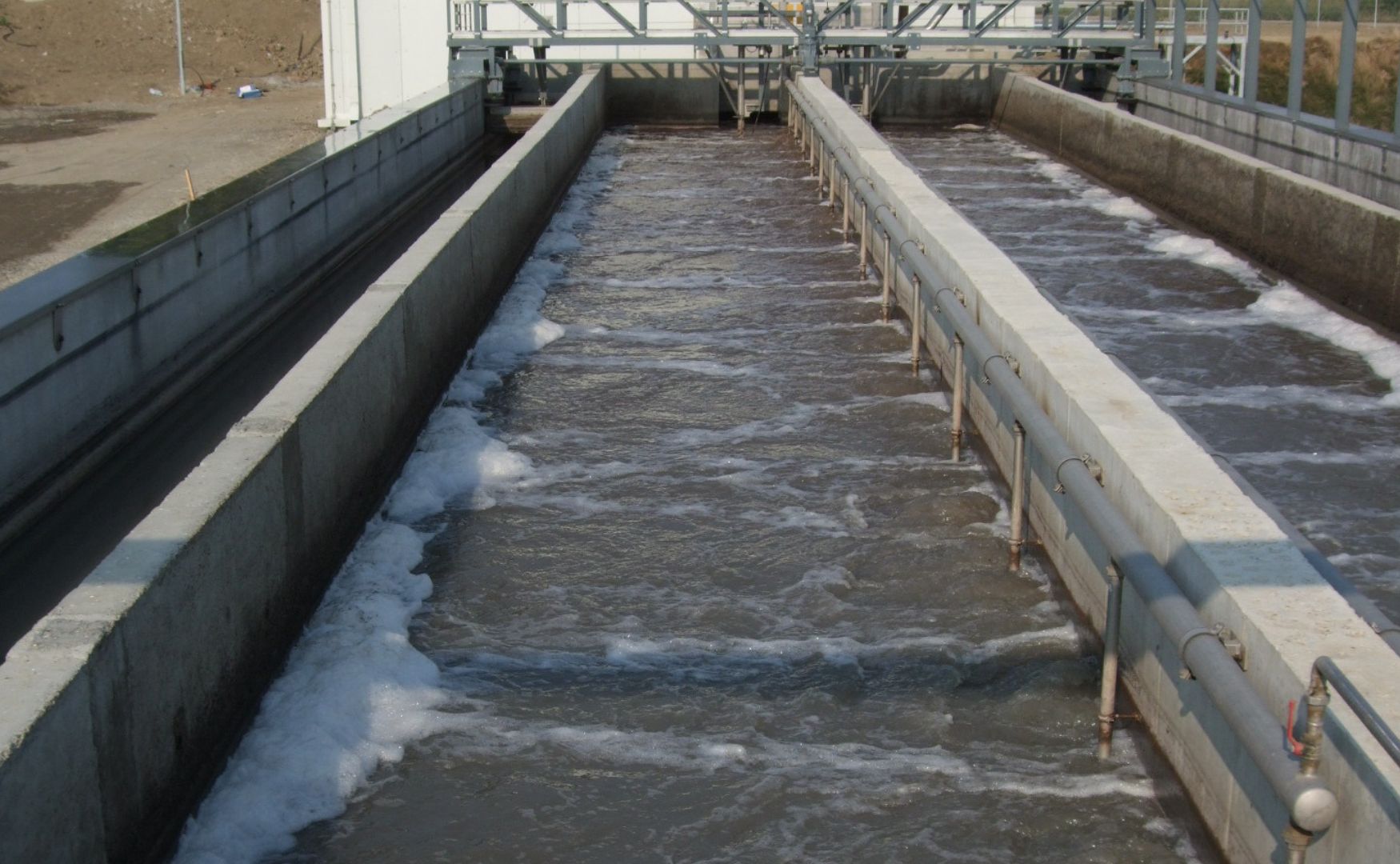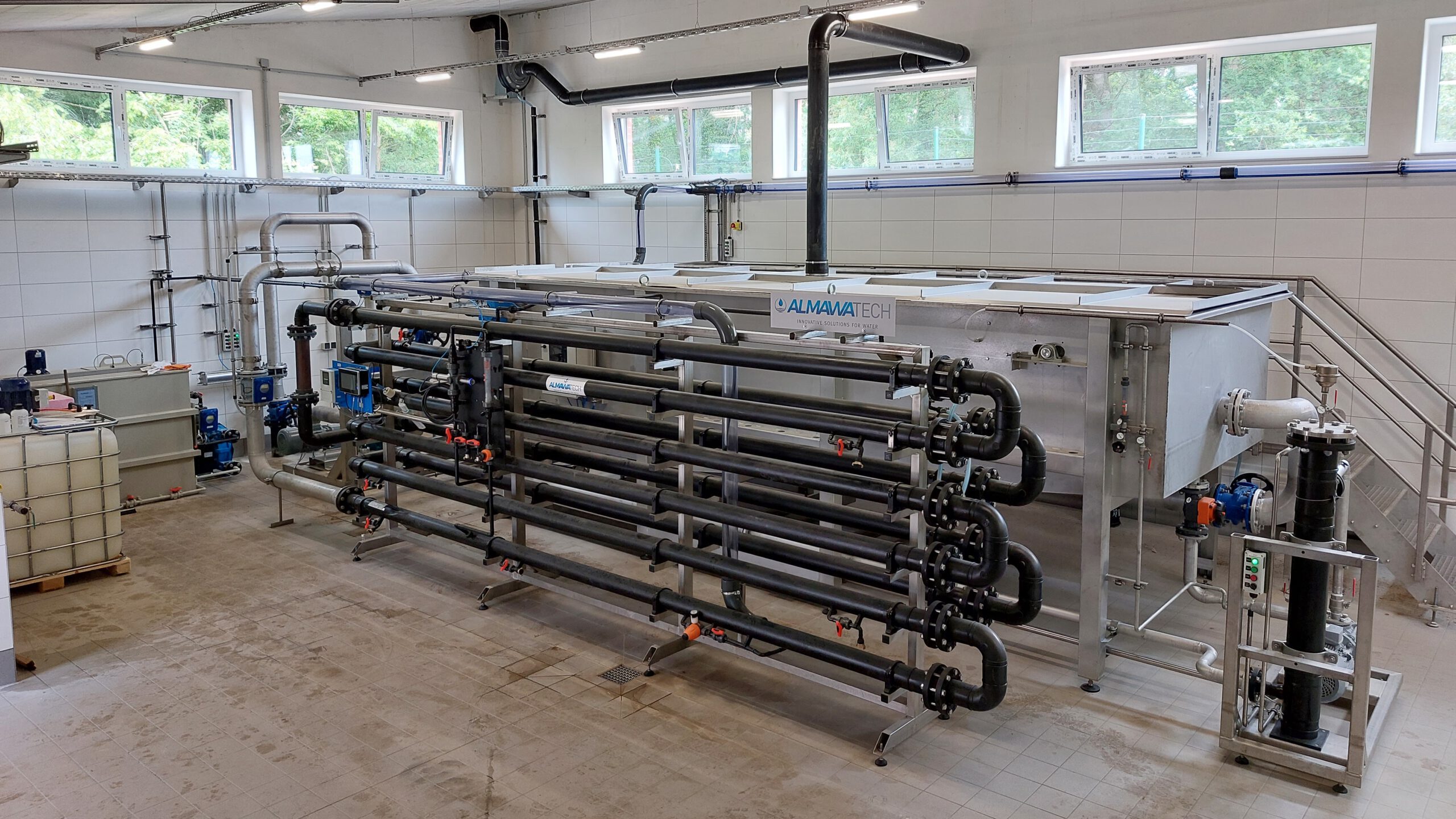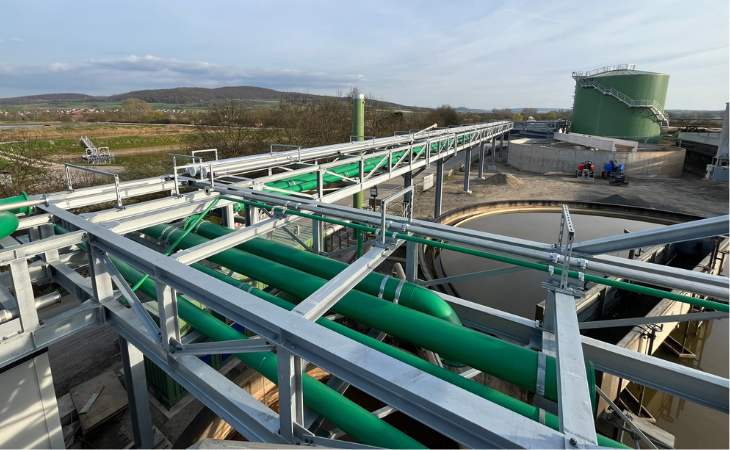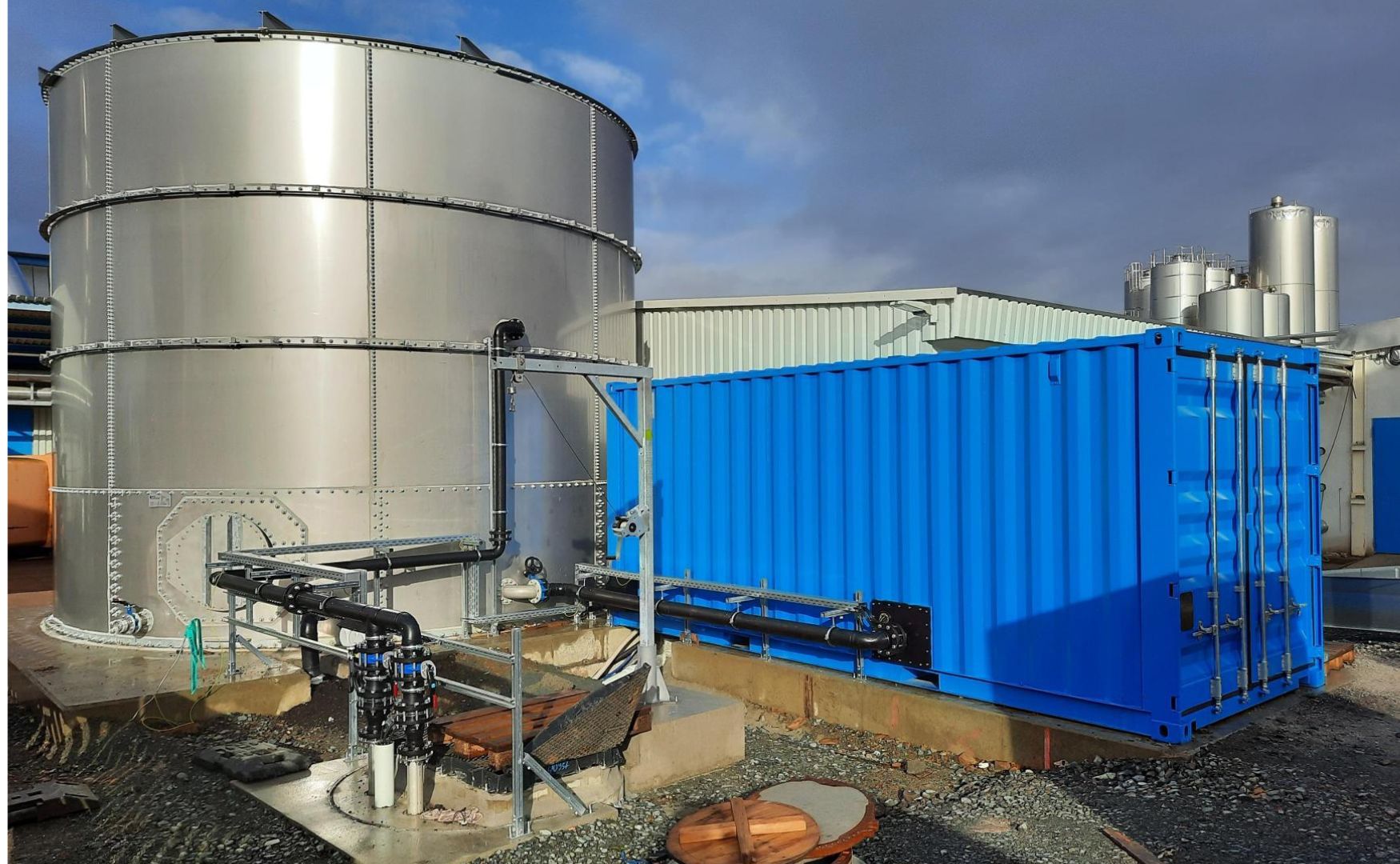The pre-treatment of water and wastewater is an indispensable process step in industrial water treatment and wastewater treatment. Its primary objective is to treat raw water or wastewater streams in such a way that subsequent treatment steps run efficiently and the legal requirements for safe discharge into the public sewer system are met. This involves removing coarse impurities, reducing the load of suspended solids, oils, grease, heavy metals and organic substances and protecting sensitive plant components, such as membrane systems or biological treatment stages, from overloading or damage.
The choice of suitable pre-treatment processes depends on the quality of the raw water or wastewater, the requirements for the final water and the specific requirements of the downstream processes.
Table of contents
Aims of the pre-treatment
Removal of coarse and fine impurities:
- Separation of suspended solids, solids and organic components.
- Protection of downstream processes such as membrane filtration or biological treatment.
Reduction of irritating ingredients:
- Removal of oil, grease, heavy metals, nutrients and other unwanted substances.
Optimization of subsequent processes:
- Ensuring the efficiency of chemical-physical or biological treatment processes.
Protection of the systems:
- Prevention of fouling, scaling and corrosion in membrane systems, heat exchangers and reactors.
Pre-treatment process
Pre-treatment comprises mechanical, chemical and physical processes, which are often combined to ensure optimum processing.
1. mechanical pre-treatment
Mechanical pre-treatment removes coarse impurities and solids from the water or wastewater.
Rakes and sieves:
- Separation of solids such as paper, textile fibers or plastic.
- Grobrechen (Spaltweite: >5 mm) und Feinrechen (Spaltweite: <1 mm).
Sand trap:
- Separation of sedimentable particles such as sand or silt by reducing the flow velocity.
Drum screens:
- Fine filtration of particles and fibers in industrial processes such as the food and textile industries.

Photo: Aerated grit trap as a pre-treatment stage (process: ALMA BHU BIO)
2. chemical-physical pre-treatment
Chemical-physical processes(CP systems) are used to precipitate dissolved substances, aggregate colloidal particles or break emulsions.
- Adjustment of the pH value with acids (e.g. sulphuric acid) or alkalis (e.g. caustic soda) to create optimum conditions for precipitation or flotation.
Precipitation and flocculation:
- Addition of precipitants such as iron or aluminum salts to convert heavy metals, phosphates or colloidal substances into solids.
- Flocculants (polymers) promote the formation of larger, sedimentable flocs.
Oil separator:
- Separation of free oil and grease by gravity separation or coalescence separator.
- Use of dissolved air to bring particles and oils to the surface where they can be skimmed off.

Photo: Our ALMA NeoDAF flotation system for the pre-treatment of organically contaminated wastewater with patented air saturation system
3. physical pre-treatment: multi-layer filter
Multi-layer filters play a central role in physical pre-treatment and are used to remove suspended solids and organic residues from water and wastewater. They consist of several filter layers made up of materials such as sand, anthracite or gravel.
How it works:
- The water flows through the different layers, whereby coarser particles are retained in the upper layers and finer particles are separated in the deeper layers.
Advantages:
- Highly efficient removal of suspended solids.
- Protection of downstream processes, especially membrane systems such as reverse osmosis.
Areas of application:
- Pre-treatment of raw water for drinking or process water treatment.
- Removal of sediments before discharge into the public sewer system.

Photo: ALMA ION ion exchanger system with upstream ALMA FIL multi-layer filter
4. biological pre-treatment
Biological pre-treatment uses microorganisms to reduce organic contamination in wastewater. It is used in particular for wastewater with a high organic load and can be carried out before main biological treatment or physico-chemical treatment.
- Microorganisms that are colonized on a carrier material break down organic substances.
- Advantages: Compact design, low maintenance costs.
- Degradation of organic substances in the absence of oxygen, e.g. in a UASB reactor.
- Suitable for heavily contaminated wastewater with a high chemical oxygen demand (COD).
Ventilated buffer tanks:
- Combination of homogenization and aerobic degradation of organic substances.
- Application: Preparation of wastewater streams for subsequent main biological treatment.

Photo: Our ALMA BHU GMR anaerobic biogas plant for generating energy from wastewater
Areas of application for pre-treatment
Pre-treatment plays a crucial role in numerous industrial processes. Its specific objectives depend on the end use of the water or wastewater.
1. pre-treatment for subsequent treatment stages
- Removal of suspended solids, organic substances and grease using multi-layer filters, ultrafiltration or biofiltration to prevent fouling and membrane damage.
- Removal of dissolved substances and particles that could clog the resins or impair regenerative capacities.
Biological treatment:
- Reduction of pollutants such as heavy metals or surfactants that could inhibit the microorganisms in an activated sludge or MBBR reactor.
2. pre-treatment for discharge into the public sewer system
Industrial wastewater must be treated before being discharged into the sewer system in order to meet the requirements of municipal wastewater treatment plants:
- Reduction of fats and oils: Mechanical and chemical processes such as oil separators or flotation remove unwanted substances.
- pH neutralizationPrevention of corrosion in sewer networks by adjusting the pH value.
- Reduction of organic pollution: Biological wastewater treatment systems such as activated sludge tanks or anaerobic biogas plants to comply with legal requirements with regard to parameters such as COD, nitrogen, lipophilic substances and phosphorus.
- Reduction of heavy metals and AOX: Removal of heavy metals, AOX and hydrocarbons by CP systems to comply with legal regulations.

Photo: Our ALMA Neutra neutralization system with aerated buffer tank for additional COD reduction
Technical challenges during pre-treatment
High variability of wastewater:
- Wastewater flows from industrial processes are often subject to strong fluctuations in quantity and pollution.
Combination of processes:
- Selecting and integrating the right mechanical, physical, chemical and biological pre-treatment processes is crucial to achieving optimum results.
Regulatory requirements:
- Compliance with strict discharge limits requires careful pre-treatment design.
Cost efficiency:
- Effective pre-treatment must minimize operating costs while ensuring high performance.
Conclusion
Pre-treatment is an indispensable part of modern water and wastewater treatment systems. It ensures that the water or wastewater meets the requirements for subsequent processes such as reverse osmosis, ion exchange or biological treatment. At the same time, it ensures compliance with legal discharge limits when discharging into the public sewer system.
By combining mechanical, physical, chemical and biological processes, companies can ensure that their pre-treatment is not only efficient but also cost-effective. Well-planned pre-treatment protects facilities, reduces operating costs and contributes to the sustainable use of water resources.
For further information on our products, please feel free to contact us at any time!







